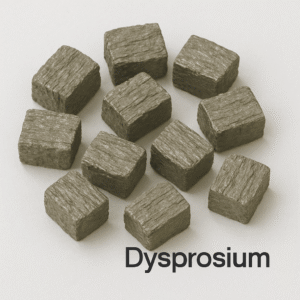Your cart is currently empty!
Gadolinium (Gd)
Basic Information Element Name: Gadolinium Symbol: Gd Atomic Number: 64 Atomic Weight: 157.25 Element Category: Lanthanide (Rare Earth Element) Standard State: Solid Appearance: Silvery-white, soft, ductile metal Chemical and Physical Properties Density: 7.90 g/cm³ Melting Point: 1,312 °C (2,394 °F) Boiling Point: 3,273 °C (5,923 °F) Electronegativity (Pauling scale): 1.20 Oxidation State: +3 (dominant) Magnetism: Ferromagnetic below 20°C; Paramagnetic […]
Description
Basic Information
-
Element Name: Gadolinium
-
Symbol: Gd
-
Atomic Number: 64
-
Atomic Weight: 157.25
-
Element Category: Lanthanide (Rare Earth Element)
-
Standard State: Solid
-
Appearance: Silvery-white, soft, ductile metal
Chemical and Physical Properties
-
Density: 7.90 g/cm³
-
Melting Point: 1,312 °C (2,394 °F)
-
Boiling Point: 3,273 °C (5,923 °F)
-
Electronegativity (Pauling scale): 1.20
-
Oxidation State: +3 (dominant)
-
Magnetism: Ferromagnetic below 20°C; Paramagnetic above that
-
Special Feature: Displays strong neutron absorption and magnetic susceptibility
Reactivity and Storage
Gadolinium reacts slowly with air and water but forms a protective oxide layer, enhancing corrosion resistance. It dissolves readily in dilute acids. For storage, it is typically kept in sealed containers or under inert gas to prevent further oxidation.
Occurrence and Extraction
Gadolinium is found in rare earth minerals such as monazite and bastnäsite, and is usually extracted as a byproduct of refining other heavy rare earths. Separation is achieved using solvent extraction and ion-exchange methods.
Isotopes
Natural gadolinium consists of seven stable isotopes, among which Gd-157 and Gd-155 are notable for their very high neutron absorption cross-sections, making them suitable for nuclear applications.
Key Applications
1. Medical Imaging (MRI Contrast Agents)
-
Gadolinium-based contrast agents (GBCAs) are used in magnetic resonance imaging (MRI)
-
Enhance visibility of soft tissues, tumors, and blood vessels
-
Widely used in hospitals and diagnostic imaging centers globally
-
-
Gadolinium’s strong magnetic moment improves T1-weighted contrast significantly
2. Nuclear Reactor Shielding & Control
-
Gadolinium is an effective neutron absorber due to Gd-157 and Gd-155
-
Used in nuclear reactor control rods, burnable absorbers, and shielding materials
-
Helps in regulating fission and protecting sensitive instruments
-
3. Magnetic Refrigeration Research
-
Gadolinium exhibits a strong magnetocaloric effect
-
Undergoing temperature change when exposed to a magnetic field
-
Used in experimental magnetic refrigeration systems as an eco-friendly alternative to gas-compression refrigeration
-
4. Phosphors & Luminescent Materials
-
Gd³⁺ ions are used in X-ray intensifying screens and LED phosphors
-
Enhance image brightness and resolution in radiographic systems
-
5. Alloys and Electronics
-
Gadolinium is added to iron, chromium, and other alloys to improve workability, magnetism, and oxidation resistance
-
Used in aerospace components and microwave technology
-
6. Magnetic and Spintronic Devices
-
Its magnetic properties make it valuable in spintronic research, data storage devices, and magneto-optic materials
Strategic Importance
-
Gadolinium is considered a strategic material due to its broad use in medical imaging, clean energy, and national defense
-
Supply is mostly dependent on China, raising concerns about supply chain security for Western countries
-
Recycling from MRI contrast waste and other rare earth waste streams is under development
Interesting Facts
-
Discovered in 1880 by Swiss chemist Jean Charles Galissard de Marignac
-
Named after Finnish chemist Johan Gadolin, a pioneer in rare earth research
-
Gadolinium is one of the few elements that are both ferromagnetic and highly paramagnetic, depending on temperature
-
Plays a crucial role in modern medical diagnostics and neutron shielding technologies
Additional information
| Weight | 1 lbs |
|---|---|
| Dimensions | 1 × 1 × 1 in |
| Weight | 100G |
-
Cerium (Ce)
$257.00 -
Dysprosium (Dy)
$670.00 -
Erbium (Er)
$174.00 -
Europium (Eu)
$1,550.00 -
Holmium (Ho)
$291.00






